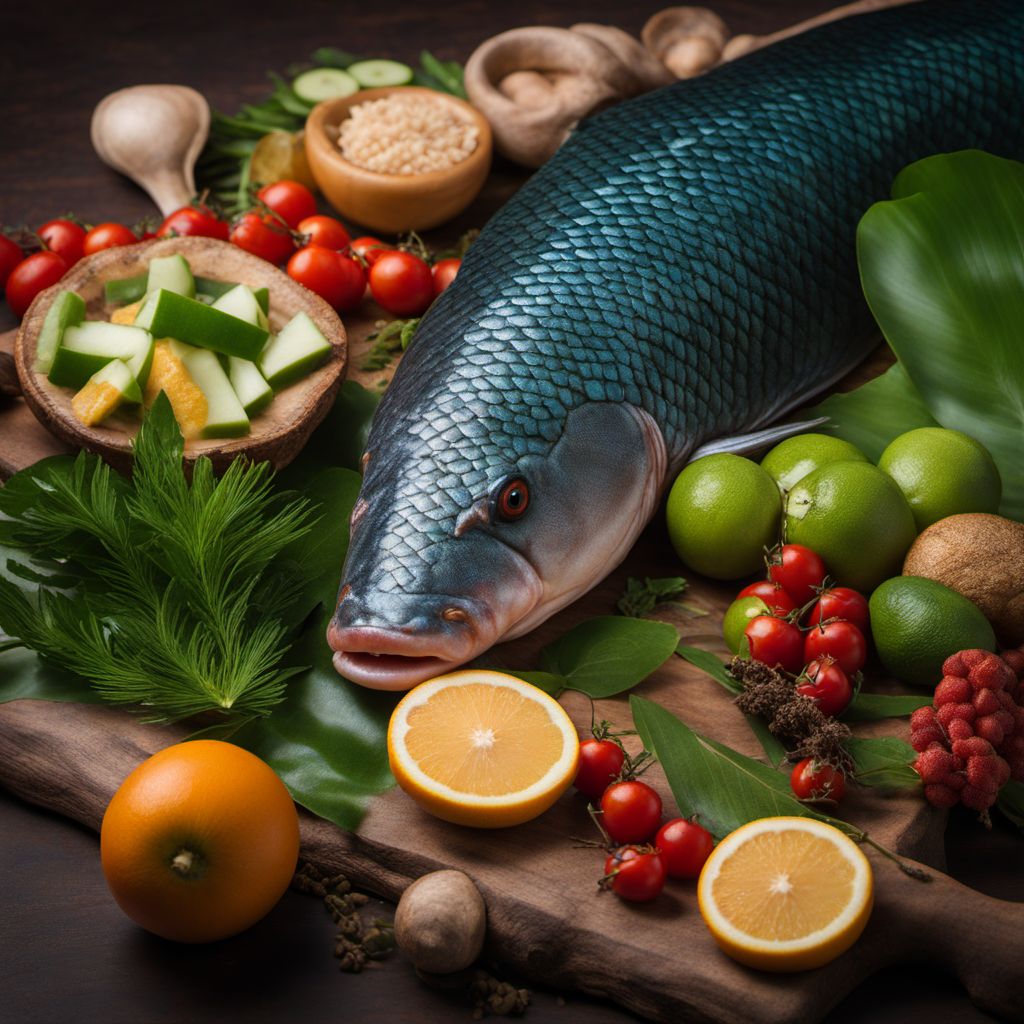
Ingredient
Arapaima
The Mighty Arapaima: A Culinary Treasure from the Amazon
Arapaima is a large freshwater fish native to the Amazon basin, known for its impressive size and distinctive appearance. It has a sleek, elongated body covered in tough, dark-colored scales, and can grow up to 10 feet in length and weigh over 400 pounds. The flesh of the arapaima is firm, white, and flaky, with a mild flavor that is often compared to a combination of cod and halibut. Its texture is meaty and succulent, making it a versatile ingredient in various cooking preparations.
Origins and history
Arapaima has a long-standing history in the Amazon region, where it has been a staple food source for indigenous communities for centuries. It holds cultural significance and is deeply intertwined with the local way of life. Historically, arapaima was also highly valued for its tough scales, which were used to make armor and tools by indigenous tribes. Today, arapaima is sustainably farmed in the Amazon and is gaining popularity in international markets.
Nutritional information
Arapaima is a nutrient-rich ingredient, packed with high-quality protein, omega-3 fatty acids, and essential minerals such as potassium and selenium. It is also relatively low in calories, making it a healthy choice for those seeking a nutritious and flavorful protein source.
How to select
When selecting arapaima, look for fillets or steaks that are firm, moist, and have a fresh, clean smell. The flesh should be translucent and free from any discoloration or strong odors. If purchasing whole arapaima, the eyes should be clear and bright, and the scales should be intact and shiny.
Storage recommendations
To maintain the freshness and quality of arapaima, it is best to store it in the refrigerator at a temperature below 40°F (4°C). Wrap the fillets or steaks tightly in plastic wrap or place them in an airtight container to prevent moisture loss and protect against any potential cross-contamination.
How to produce
Arapaima is typically produced through sustainable aquaculture practices in the Amazon region. Amateur fish enthusiasts can recreate similar conditions in large tanks or ponds, providing clean water, appropriate temperature, and a balanced diet to raise arapaima.
Preparation tips
Arapaima can be prepared using various cooking techniques such as grilling, baking, pan-frying, or poaching. Its firm flesh holds up well to heat and can be marinated or seasoned with herbs, spices, or citrus flavors to enhance its mild taste. It is often served as a main course, either as a whole fillet or cut into smaller portions. Arapaima can also be used in soups, stews, or ceviche preparations.
Culinary uses
Arapaima is a versatile ingredient that can be used in a wide range of culinary applications. It can be grilled and served with a citrusy salsa, pan-fried and paired with a creamy sauce, or baked with aromatic herbs and spices. Its mild flavor and meaty texture make it an excellent choice for ceviche or fish tacos. Arapaima can also be incorporated into soups, curries, or stir-fries, adding a unique twist to traditional recipes.
Availability
Arapaima is commonly available in the Amazon region, particularly in countries like Brazil, Peru, and Colombia, where it is native. It is also becoming more widely available in international markets, thanks to sustainable farming practices.
More ingredients from this category » Browse all

Cod, murray
The Mighty Murray Cod: A Delicate Delight

African bonytongue
Exploring the African Bonytongue: A Delicacy from the Waters

Snakeheads(=Murrels)
The Mighty Murrels

Bluegill sunfish, or bluegill bream
The Freshwater Delight: Bluegill Sunfish

Gourami (asia)
The Delicate Delight of Gourami

Perch
Delicate Perch: A Freshwater Gem

Nile perch
The Mighty Fish of the Nile: Unveiling the Secrets of Nile Perch

White crappie
The Delicate Delight: Exploring White Crappie

Perch, golden
The Golden Catch: Perch

Pike
The Mighty Predator of Freshwater

Catfishes (freshwater)
The Delicate Delight: Freshwater Catfish

Asian swamp eel
The Aquatic Delicacy: Unveiling the Asian Swamp Eel